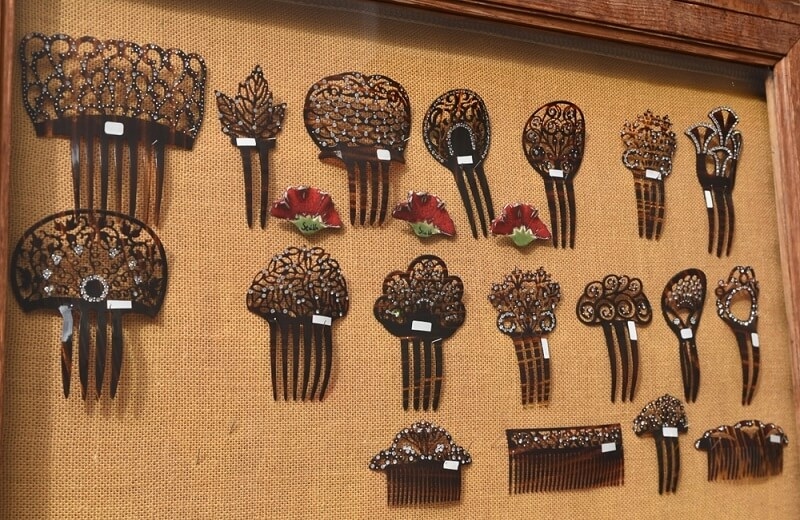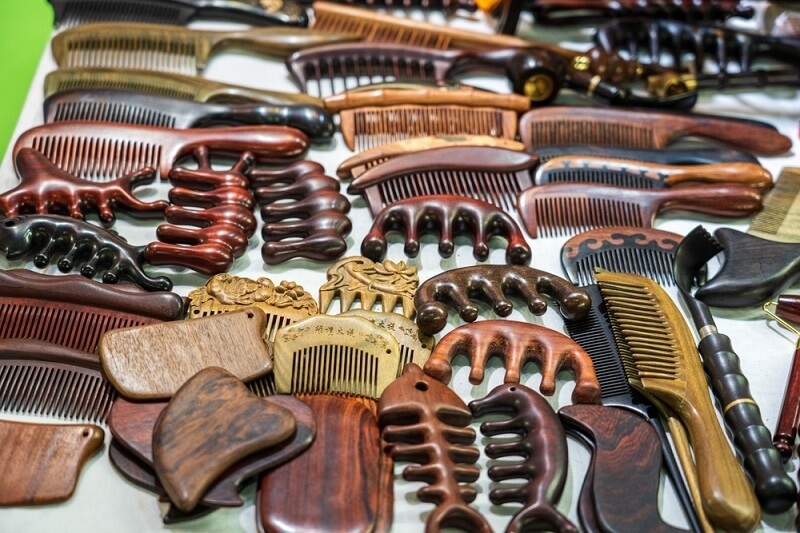
The culture of ancient Egypt has always been something that historians, archaeologists, and enthusiasts can't help but be captivated by. With its remarkable art, architecture, and social practices, it is no wonder that one finds a lesser-known yet equally interesting aspect, the artistry of decorative combs. These apparently simple hair accessories were much more than just simple grooming tools, they were actually works of art imbued with cultural, social, and even spiritual significance. With their complex design and symbolic themes, Egyptian ornamental combs provide a glance into the artistic tastes and the social norms of one of the most advanced human civilizations in recorded history.
Hair was an important element in ancient Egyptian society, used as a medium of personal expression and a marker of social identity. The use of combs and other grooming tools reflected the Egyptians' meticulous attention to personal appearance and hygiene. However, merely utility is far from what these comb artifacts represented because they were handcrafted with delicate care and covered with artistic flair, transforming a tool into emblems of high status and magnificence. Thus, finding the origins, history, changes, cultural meanings and significance is crucial to the knowledge that may be realized in ancient Egypt.
Combs in ancient Egypt date back to the Predynastic period, about 4000 BCE. The earliest combs were basic, functional tools and came in the form of objects carved from bone, ivory, or wood. As the society of Egypt developed and the art flourished, combs grew more decorative with motifs in them. By the Old Kingdom of (2686–2181 BCE), combs indeed had already turned into objects of art, and testimony to refined skills and aesthetic standards prevailing in that time.
Animals, plants, and religious symbols were carved on the combs. The motifs chosen were not arbitrary but carried a deeper cultural and spiritual meaning. For example, the lotus flower, which was used in the combs, is symbolic of rebirth and purity. Images of the falcon, which appeared on the combs, symbolized protection and divine power. Such designs portrayed the connection of the Egyptians to nature and their religious beliefs, making ordinary objects deeply meaningful.

The choice of material for the decorative combs would depend on the purpose of their use and the social status of the owner. The most valuable ones were made of ivory, gold, and ebony, while simple ones were used in daily life, which could be made of wood or bone. This choice of material did not only guarantee durability but also luxury to the combs.
The craftsmanship in these combs is also remarkable. Carving, inlaying, and painting were combined to come up with rather complicated designs. For example, the ivory combs were carved into detailed relief images of animals or figures of humans. In other instances, gold combs were inlaid with semi-precious stones or enamel pieces that added their element of aesthetic appeal. These techniques showed how a superior show of Egyptians' mastery over several art forms and their ability to make functional objects masterpieces.
In ancient Egypt, decorative combs were much more than something to use for personal grooming, they symbolized status and identity. Their elaborate designs and expenses spoke of the amount of wealth and social standing their owners had. The members of the elite class, in turn, commissioned custom-made combs featuring personalized motifs, stressing once more how exclusive they were.
Apart from the status symbol, combs held spiritual and cultural significance. Other combs were used in rituals for the gods, or they were offered up to gods as sacrifices. The themes underlying these combs were likely protective or auspicious, indicating beliefs in their power to bring good luck or evil. For instance, scarab beetles added regeneration or protection interpretations, and an ankh, the symbol of life, represented longevity and good health.
There were a lot of variations in the hairstyles in ancient Egypt depending on age, gender, and social status. Both men and women and even children used combs to keep their hair well-groomed. Their hair could be short and simple or elaborate and accessory-laden. Decorative combs played an important role in the locking and styling of the above hairstyles and, therefore played versatile and integral roles in daily life.
Women used combs particularly to style hair in intricately braided and curled designs and even with hairpieces. Sometimes, such styles could be further decorated with beads, ribbons, or other adornments that gave them a touch of elegance. Decorative combs allowed for such styles and also served as an ornament themselves, merging functionality with artistry.
Decorative combs played an important role not only in life but also in death and the afterlife. Archaeological diggings have uncovered several combs in tombs; this indicates that they were also considered essential items for the deceased. Such combs were found adjacent to other grooming tools and personal belongings, and it was believed that even in the afterlife one's appearance should be kept up.
Women used combs, particularly for styling hair into intricately braided and curled designs and even hairpieces. In some cases, such styles might be further beautified with the addition of beads, ribbons, or other ornaments that bestow on them an air of grace. Decorative combs could be used in such styles as well as becoming an ornament on their own while combining functionality with artistry.
The decorative combs of ancient Egypt left an impressive legacy, and their designs inspire modern designs and craftsmanship. Most modern hair accessories borrow the motifs and aesthetics from ancient Egyptian combs and mix them with modern techniques. Combs are kept in museums all over the world as part of their collections for people to view the artistry and cultural heritage of ancient Egypt.
These combs also provide useful insight into the social and artistic trends of the period. Materials, designs, and contexts are scrutinized to give a better understanding of the values, beliefs, and daily practices of ancient Egyptians. This will contribute to a broader appreciation of the sophistication and creativity that defined their civilization.
The combs also symbolize windows of ancient Egyptian artistry but are very important artifacts to the rich history of the civilization. Their discovery in archaeological sites sheds light on the daily lives religious practices and societal norms of the Egyptians. Further efforts to conserve them and study the combs ensure that the coming generations can explore and learn from the remarkable objects. By preserving these artifacts, we respect the ingenuity of ancient artisans and maintain contact with a culture that shaped human history.
The decorative combs of ancient Egypt are a great example of the great artistry and cultural importance of everyday objects in this fascinating civilization. Not only were they mere grooming tools, but rather the sign of values, beliefs, and social dynamics that characterized the time in which they lived. From their intricate designs and symbolic motifs to their role in religious rituals and funerary practices, decorative combs are evidence of the creativity and innovation that medieval Egyptian artisans had.
One can not help but remember the long-lasting legacy left behind by ancient Egyptian culture when discovering and studying these artifacts about how they will always influence the art and designs of the future. These combs are an example of the Egyptians' ability to make simple things in life beautiful and meaningful, leaving the world with a never-ending source of inspiration and wonder.
This content was created by AI